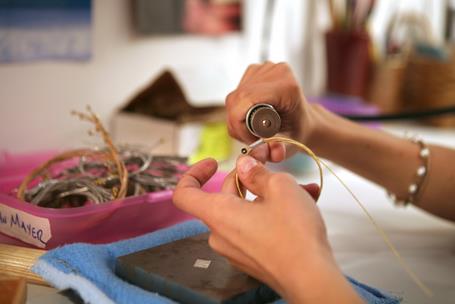
If you believe everything you read in the papers, rock stars are a blot on the landscape. Penthouse suites covered in fresh-cut flowers, hotel walls drunkenly tunneled through with cheese knives, baths filled with champagne…no cliché left unturned in the search for an arresting headline. But what is the ecological footprint of the average musician (if there’s such a thing)?
Take all those strings – a fresh set on every instrument for every gig, I bet. And since they’re metal or nylon, what happens to them afterwards? An elegant eco-friendly answer: jewelry. What is a guitar string but a thread of superbly-engineered wire, ideal for making bracelets? Add the fact that said bracelet was once being strummed by the likes of John Mayer or Ben Harper…and you have a very attractive business model.

And by business I mean "charity". All of the profits from the Wear Your Music project go to charities chosen by the 150+ artists donating their strings – for example, a RelixBand bracelet made from John Mayer’s strings sold for $1,100, all of which went to the African Children’s Choir. If you like the idea but a thousand bucks makes you twitch, you’ll be happy to know that the bracelets usually start at $150, with the price (or rather donation) rising according to whether you want engravings, semi-precious stones or even a diamond to be part of the package.

So don’t believe the hype – popular musicians aren’t all about profligacy, excess and TVs tipped out the window. From sustainable instruments to donated strings, are we seeing signs that the rock & roll lifestyle is becoming (gasp) a responsible one?
Images: dpade1337 / Wear Your Music
